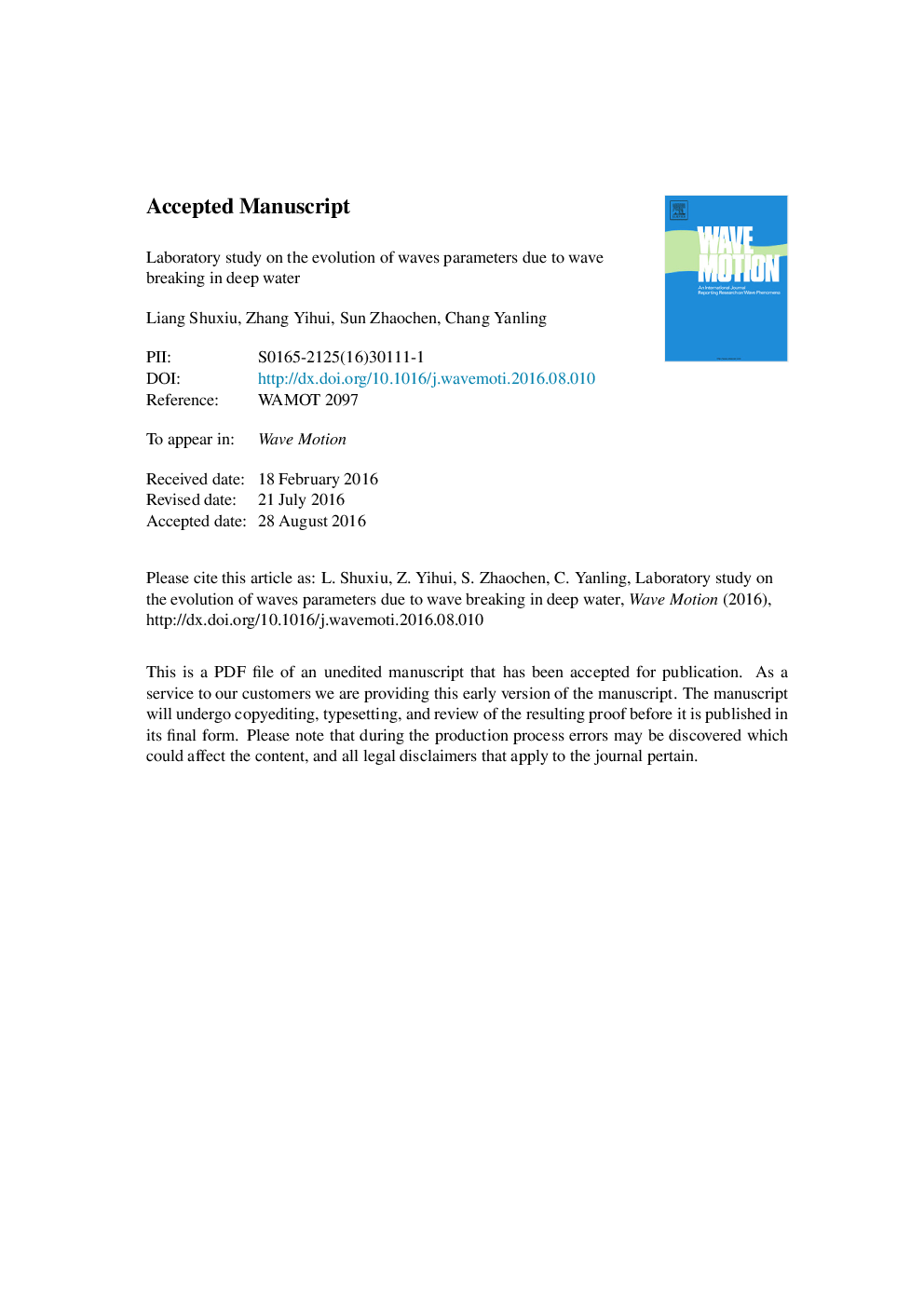| Article ID | Journal | Published Year | Pages | File Type |
|---|---|---|---|---|
| 8256835 | Wave Motion | 2017 | 20 Pages |
Abstract
Understanding of the occurrence of the wave breaking, the process of the wave breaking and evolution of waves after they break in deep water is crucial to simulate the growth of wind wave in ocean. In this study, deep-water breaking waves with various spectral types, center frequencies and frequency bandwidths are generated in a wave flume based on energy focusing theory. The time series of the wave surface elevation along the flume are obtained by 22 wave probes mounted along the central line of the flume. The characteristics of deep-water wave breaking are analyzed using the spectrum analysis based on the Fast Fourier Transform (FFT). For small center frequency the maximum height of wave surface generated using the Pierson-Moskowitz (P-M) spectrum is produced and the impact of the frequency width is small in wave breaking zone. While the spectral type has a significant impact on the local wave steepness during breaking, the influence of center frequency and frequency width on the local wave steepness is very weak. The significant wave steepness changes significantly after wave breaking, but it remains stable in the upstream or the downstream of wave breaking zone. After wave breaking, the peak frequency remains stable, but the spectrally weighted wave frequency changes significantly. The relationship between the level of downshift and the incident wave steepness is approximately linear. By analyzing the energy spectra, it is found that the energy loses near high frequency of controlling frequencies range and increases near peak frequency during the wave breaking. After wave breaking, the total energy dissipates remarkably with increasing breaking intensity.
Related Topics
Physical Sciences and Engineering
Earth and Planetary Sciences
Geology
Authors
Liang Shuxiu, Zhang Yihui, Sun Zhaochen, Chang Yanling,
